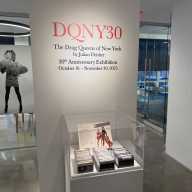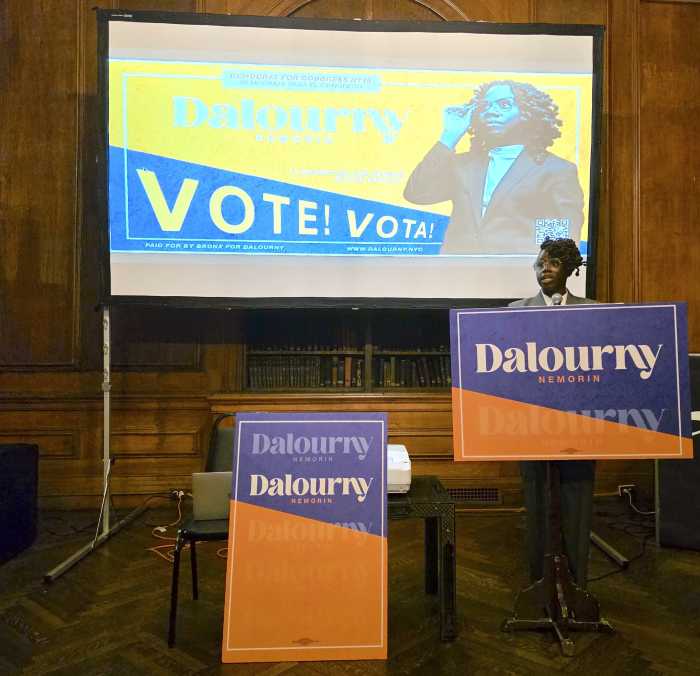Condom lessons still banned in classrooms; no testing, compliance measures planned
After years of delay and a disregard for mandates that HIV/AIDS be taught in the city public schools, the Department of Education unveiled a revised AIDS curriculum on December 1 and pledged that the required lessons would be taught before the end of the year. AIDS education advocates, who are just getting a look at the document now, are skeptical of that commitment and critical of Republican Mayor Michael Bloomberg’s continuation of a Giuliani-era policy barring health educators from doing condom demonstrations in classrooms.
Betty Rothbart, director of the DOE’s Office of Health Education and Family Living and supervisor of the revision, said, “This publication underscores the Department of Education’s fervent belief that this is important. It is crucial to get it right.
She cited the city health department’s collaboration on the curriculum.
While the guide notes that 69 percent of new HIV infections in the city were due to homosexual transmission, the lessons do not deal with the special problems faced by isolated gay youth that lead to their risk activity for HIV.
“Our approach is to discuss not who one is, but what one does,” said Rothbart.
The word “gay” barely appears in the guide and Rothbart would not say if any gay people had been involved in the preparation of it.
“The curriculum does address self-respect,” she said.
The Bloomberg administration has also resisted changing the atmosphere for LGBT youth in the schools through implementation of the anti-bullying law passed by the City Council last year. The city’s primary effort to address harassment of LGBT students is through funding the Harvey Milk High School, based at the Hetrick-Martin Institute, which provides a refuge for gay, questioning, and transgendered youth who face unwanted hostility in other public schools. Enrollment at Harvey Milk has grown during this mayor’s tenure.
While the city does not accept federal money for “abstinence-only” prevention education programs, the guide does follow city and state mandates to emphasize abstinence as the “safest way” to avoid HIV infection, and fails to promote “outercourse” activities such as mutual masturbation that also carry no risk and give horny teens an alternative to nothing at all.
“We need to align with community values,” Rothbart said, though a sexually active rate of more than 50 percent among high school students, noted in the guide, would seem to indicate that most students value their sex lives. The guide says that “abstinence is the healthiest, most appropriate sexual choice for young people” at one point and “sexuality is a natural and healthy part of life” in another.
While the document refers to the old Board of Education taking the lead in the 1990s and asserts that AIDS was not recognized as an adolescent medical problem for a decade into the crisis that began in 1981, the board offered AIDS lessons in 1987 shortly after grants started flowing to adolescent health groups in the mid-1980s to do HIV prevention.
In 1991, Chancellor Joseph Fernandez with the support of Democratic Mayor David Dinkins ushered through a comprehensive HIV/AIDS education program including condom availability in high schools.
Condom demonstrations in classrooms by public health educators had been common practice even before the AIDS crisis. When Republican Mayor Rudy Giuliani took office, he had his board members push through a ban on such lessons in classrooms, limiting them to one-on-one sessions in health resource rooms. Despite the curriculum’s assertion that condom effectiveness depends on knowledge of proper use, Bloomberg, who has sole control of the schools, has refused to restore the classroom lessons.
Stephanie Andujar of Youth Organizers United noted that the new curriculum introduces the female condom, but doesn’t allow for demonstrations in classrooms.
“That’s when you have students together and they feel most comfortable,” she said, adding that most students “feel ashamed” to ask a teacher for a one-on-one demonstration because “it’s too personal.”
Rothbart said there is a lot of “age appropriate” information about proper condom use in the lessons and that limiting demonstrations to resource rooms had the “advantage of giving young people the opportunity to ask questions.”
“We need to be able to reach young people directly,” said Joe Pressley, executive director of the New York AIDS Coalition of the condom demonstration flap. He has not read the new curriculum yet, but called the failure to do mandated education over the last decade “genocide.” He said, “The curricula need to be honest and true to the needs of young people.”
Pressley added, “I’m not confident that the city will do all that it can to see to it that the curricula are implemented.”
The Department of Education left it to Rothbart to provide statistics on compliance with city and state mandates for five to six HIV/AIDS lessons annually. Rothbart, in her current position since September but a consultant in the field since the late 1980s, did not have the data and the press office failed to provide them.
Youth Organizers United surveyed 486 students at five high schools in Brooklyn and Manhattan earlier this year and found that 25 percent had received no HIV education in the past year and 15 percent had received just one lesson. Thirty-five percent said there was no Health Resource Room in which to pick up condoms. Only at FDR High School did a majority (52 percent) receive the six lessons mandated.
Rothbart said that there are no plans to do pre- and post-testing of student knowledge levels on HIV/AIDS “this year” to see if the lessons take. The DOE does have students participate in the Center for Disease Control and Prevention’s Youth Risk Survey, but has no other plan for assessing whether these specific lessons reduce risk behaviors.
Daniel Dromm, an out gay 4th-grade teacher at PS 199 in Sunnyside, Queens who has 23 years teaching experience, said, “Nothing gets done in the public school system except reading, writing, and math. By their own words, it is a performance driven system and the only thing that matters is test scores. There is no testing done on AIDS issues, so it always gets overlooked.”
Bloomberg, on World AIDS Day, said, “We will leave office four years from now having made an enormous difference in the fight against AIDS or I will have died trying.” The revised curriculum indicates that he is going to have to try a lot harder.
The full text of the new curriculum can be viewed by going to www.nycenet.edu/Offices/TeachLearn/OfficeCurriculumProfessionalDevelopment/HealthEducation/Resources/HIVAIDSCurric.
gaycitynews.com



































